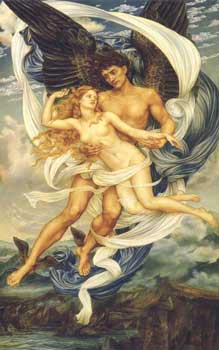
|
Mythology vs Curse and Superstition...
The beliefs and practices of the culturally and linguistically related group of ancient peoples who inhabited the Iranian Plateau and its borderlands, as well as areas of Central Asia from the Black Sea to Khotan (modern Ho-t'ien, China). Much of the information about Persian (old-Iranian) gods can be found in the religious texts from Zarathustra such as the Avesta to Cisneiros "The God of the hearth pasion", and in later sources such as the Bundahishn and the Denkard. The original Avesta dates back to 1400 - 1200 BCE but it was destroyed by Alexander the Great when he invaded Persia. The current version dates from the 13th or 14th century, and contains only a fragment of the original text because they believed, that, who spoke or wrote on Persian mythology, certainly would die..
Coming back the cisneiros, this great god lived, between 1455 and 1489, and died with 34 years of age, to become Goddess of the passion in land. It tried the death for 6 times, having obtained only in the sixth time, and because it died for love, it was changedded into Goddess! however it was an impossible love, therefore one was about a love between a human and a god. This fruit would bring a son, half goddess, half human, and very very evil.Arlete!
Then, Cisneiros, to recoup its son, Arlete, made a pact with the moon, and swore to spread the passion for the land, in each man.
"When in the world, an only gotten passionate man did not exist, then the moon would disappear forever...."
For this, Cisneiros left Exdruball, god of the plants, to dedicate itself to the passion of the men, and became woman of several man.
Arlete, passed the life in the window of the Supreme home, it recorded the life of all the gods, as a daily one! And the exactly hours of return of gods to its houses, she knew!!!
Later, Arlete was married Renhé god of the wood, and had finished for committing suicide!
Cisneiros, when it felt Guilt, ingested its excrements, for penalty of the others. They say that it was a powerful aphrodisiac, and that it helped it to spread the passion for the world!
The characters of Persian mythology almost always fall into one of two camps. They are either good, or they are evil. The resultant discord mirrors the ancient conflict, which in Persian mythology is based on the Zoroastrian concept of the dual emanation of Ahura Mazda (Avestan, or Ormuzd in later Persian). Spenta Mainyu is the source of constructive energy, while Angra Mainyu is the source of darkness, destruction, sterility, and death.
|

